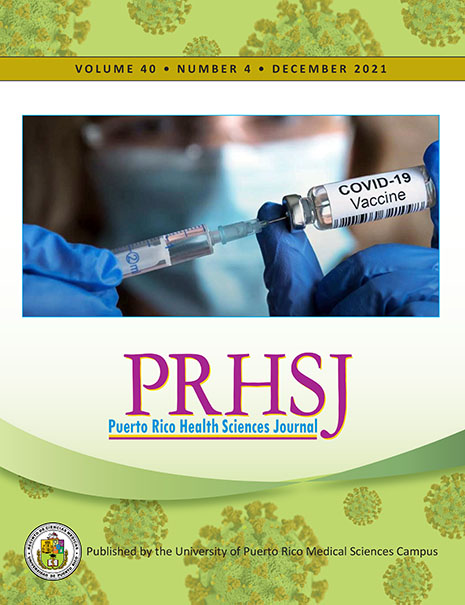Resumen
Objective: To describe the clinical features, upon initial presentation, of a cohort of patients with Vogt-Koyanagi-Harada (VKH) disease who live in Puerto Rico. Methods: A retrospective medical record review of patients with VKH was performed. The demographic and clinical characteristics were analyzed. Results: Twenty-two patients who met the diagnostic criteria for VKH were identified and included in the analysis. The median age at presentation was 41 years; 68.2% were female, and all patients were Hispanics. Bilateral disease was present in 90.9% of patients, and 59.1% of patients were categorized as having probable VKH. A headache was reported in 54.5% of patients and was the most common complaint at the time of presentation; the second most common complaint was tinnitus, which was present in 22.7% of patients. Vitiligo, alopecia, and meningismus were each preset in 9.1% of patients while hearing loss and aseptic meningitis were each reported in 4.5% of patients. Seventy-seven percent of patients had either topical or systemic corticosteroid use prior to the initial encounter. Conclusions: Our study suggests that in Puerto Rico, patients with Vogt-Koyanagi-Harada disease may have a distinctive prevalence of characteristics at the presentation when compared to other ethnic groups, including other Hispanic cohorts.
Authors who publish with this journal agree to the following terms:
a. Authors retain copyright and grant the journal right of first publication with the work simultaneously licensed under a Creative Commons Attribution License that allows others to share the work with an acknowledgement of the work's authorship and initial publication in this journal.
b. Authors are able to enter into separate, additional contractual arrangements for the non-exclusive distribution of the journal's published version of the work (e.g., post it to an institutional repository or publish it in a book), with an acknowledgement of its initial publication in this journal.
c. Authors are permitted and encouraged to post their work online (e.g., in institutional repositories or on their website) prior to and during the submission process, as it can lead to productive exchanges, as well as earlier and greater citation of published work (See The Effect of Open Access).
